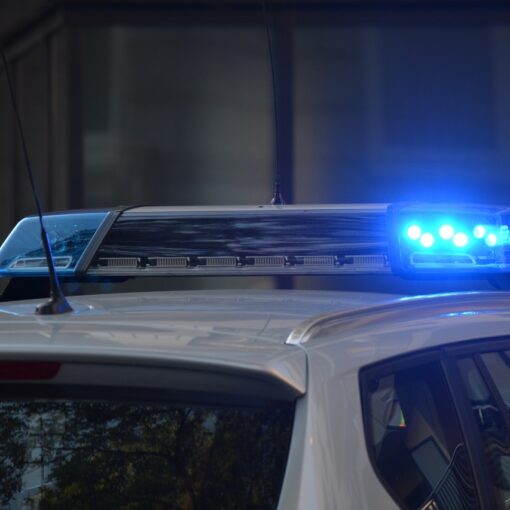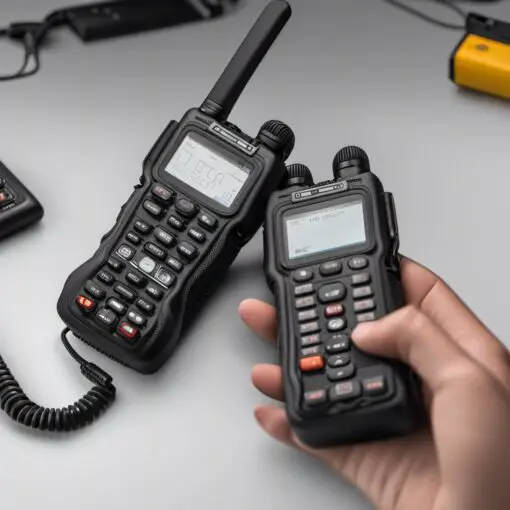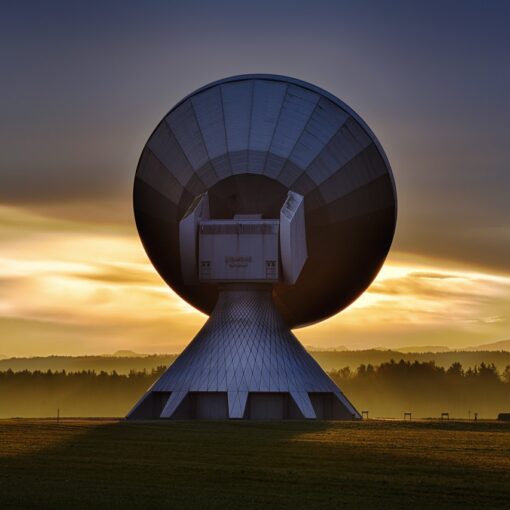Ham radios and police scanners are in a constant state of comparison, even though there is very little to compare. Sort of like comparing a rock that s slightly rounded with a tennis ball. Most people just want to know if a Ham radio is as effective a police scanner as a police scanner.
Both police scanners and Ham radios do share one thing in common and that is an extraordinary passion from their respective users, though police scanner enthusiasts are far less community-driven than Ham radio aficionados are.
A police scanner and a Ham radio are ultimately nothing more than tools and those tools are used to complete very specific tasks. The desire for comparison is primarily derived from the occasional level of crossover between the two.
Although the two devices are difficult to compare, there are some noteworthy exceptions, and this is also an opportunity to inform those who are desirous of dipping their toes into the wide world of radio enthusiasts.
- History
If you want to know the differences between Ham radios and police scanners, it’s important to know the history of both. Where something comes from is often a great way to understand what it is and where it’s going. That’s especially true of the people who embraced it and who make it what it is today.
History of Ham Radio
Once upon a time, the term “Ham” was a derogatory slur that was aimed at amateurs who didn’t know their way around morse code. It’s also the term that gave birth to the offshoot insult “ham-fisted,” as in, an amateur that can’t handle the subtle nuances of punching in morse code.
Radio transmissions got their start in 1895, as Guglielmo Marconi sent the first radio transmission out into the world. He based his first transmission off of Heinrich Hertz’s theory of radio waves, and it worked. The first transatlantic transmission followed at the turn of the century.
When Ham radio really grew into its legs, it was all about morse code, and all of it was restricted throughout the two World Wars, as fear of spying grew. Once it became legal for amateur radio enthusiasts to use Ham radios again, the FCC took over, regulating and restricting it to licensed users.
History of Police Scanners
Police scanners were not always relegated to specialized devices that scan the Public Safety bands. When police first began communicating by radio, anyone with a radio could listen in as often as they wished.
Weirdly enough, the FCC allowed it in 1923 Detroit, but only if the police department played some sort of entertainment for the listeners. They eventually started playing the song, “Yankee Doodle” before they started making calls at the beginning of the shift.
When it comes to actual police scanners, that sort of device didn’t hit the marketplace until the 1970s, along with Citizen’s Radio (CB), which used to require a license just like Ham radio operators are required to have today.
When you purchased one of these prehistoric police scanners in the 70s, you also had to purchase (sold separately, of course) a tuning crystal, without which your police scanner was essentially an expensive paperweight.
The one thing that slightly tarnishes the police scanner crowd is the fact that they aren’t always used for benevolent purposes and many use them to warn criminals and track police officers for nefarious motivations.
- How Do They Work?
Most people think of radio waves the same way as they think about water as it comes out of the faucet. However, radio is a complex and interesting thing. It’s far more interesting than some would believe because there is a lot more going on than just tuning in your car radio to hear the latest tunes.
How Does Ham Radio Work?
Ham radio users have a set of frequencies set aside for them known as amateur frequencies. There are three primary or basic bands that are set aside for this purpose. Keep in mind that a band can have tons of different frequencies on it. So three bands is not necessarily a small thing.
- Very High Frequency (VHF)
- Microwave Frequency
- Ultra-High Frequency (UHF)
Microwave frequencies are a rare space occupied by Hams and it’s not something that is messed with too often, however, they are available. Some refer to it as a niche area for Hams. Interestingly enough, microwave frequencies can be bounced off of the moon, which Hams are known for doing.
The frequencies between 420MHz and 450MHz are relegated to the UHF category and it has a broader range, in terms of how far the signal can reach, over VHF.
VHF is the low man on the totem pole, between 144MHz and 148MHz. Hams spend much of their time on here because there is less interference and its the best band for local and community communications, especially during emergencies.
Ham radio frequencies tend to be just above the AM and can run all the way up and over 1200MHz.
That isn’t always the case, but as technology improves, more and more devices that access the Ham frequencies are able to reach higher frequencies, which opens them up to police channels (more on that later).
How Do Police Scanners Work?
There are three main features that are sought after with police scanners:
- Scan
- Manual Scan
- Search
After all, that’s what police scanners do. Scanning is what they are designed for and they scan the public safety bands in search of police chatter, often picking up emergency response chatter as well, from firefighters, medical personnel, and EMS vehicles en route.
When you activate “scan,” the scanner will sit there and scan through all of the frequencies within those bands, searching for chatter. When it finds one, the user can write down that frequency for later listening if they want to.
The manual scan is just that, no more and no less than what you do when you are scanning for a good radio station in your vehicle.
Search will essentially compile a list of available frequencies in the area. Once you’ve created a tabulation of all of the various frequencies that are useful, you can manually program them into the scanner for “scan” mode.
- Getting a License
This is the largest divide between those who use police scanners and those who use Ham radios and if you’re on the outside looking in, trying to make a decision, this could also be the deciding factor.
If you want to listen in on a Ham radio, you are perfectly welcome to do so, just like on a police scanner. However, the moment you hit the transmit button on a Ham radio, you’re breaking the law. The reason is that you have to be licensed to transmit on a Ham.
You don’t have to have a license to transmit on a police scanner, however, depending on where you live, it may or may not be illegal to transmit on an emergency channel and you could get in a lot of trouble if you try.
When it comes to Ham radios, there are three levels, in terms of licensing.
- Technician
- General
- Extra (Amateur Extra)
The technician is the first license and you have to obtain it before all others. The General license opens up more opportunities and frequencies for you, while the Extra—sometimes known as Amateur Extra—gives you the full range of Ham benefits on the amateur radio waves.
- Listening to the Police
The primary difference between a police scanner and a Ham radio is what they do in terms of listening in on police chatter.
When it comes to Ham radios, you can listen to the police, but the scanning capabilities for those frequencies are nowhere near as fast and nowhere near as robust as that of a police scanner.
If you want to listen to emergency services, a police scanner will find the frequencies and get you in the know a whole lot faster than a Ham radio.
The problem is, one device is designed specifically for listening in on Police scanners, while the other’s ability to listen in on police is generally incidental. Typically, the public safety frequencies are above 800MHz and while police scanners are all designed to tune in, not all Hams are.
Of course, more and more Ham radios are coming out with the incidental addition of those frequency ranges, however, they’re still not as fast as scanning for those frequencies as police scanners are. One is a dedicated tool, while the other is more of a jack of all trades.
- Features
Despite some of their similarities, the features of Ham radios and police scanners are pretty different in terms of what they can and cannot do.
Ham Radio Features
Those who aren’t in the know, assume that a Ham radio is nothing more than a receiver for listening to other Hams and a transmitter if you ever feel the wild urge to talk to one of them. However, there’s more to it than that.
- Weather alert technology
- Typically over 40,000 frequencies
- Channel labeling
- Programming
- Dual-Band and quad-band
- Portability
Weather alert technology is always a boon. This is especially true because Hams are first and foremost a community. When primary communication technologies are down, first responders also utilize Ham.
Hams are also very effective in communicating with each other during a disaster, so weather alert technology gives them a leg up, even over modern smartphone users as far as communication capabilities are concerned.
Having over 40,000 frequencies to communicate over the amateur waves is pretty robust and there are certainly Hams out there who have access to even more. That’s also true for newer models coming out that have access to frequencies outside of Ham, such as public safety frequencies and police channels.
Channel labeling helps with organization, especially when you find frequencies that are worth returning to later. Not only that, but you can program those channels for later use as you scan the airwaves.
Dual-band and quad-band simply mean that it can monitor several badlands at the same time, two or four. It also includes transmitting, sort of like being on a Facetime call with multiple people at the same time.
Gone are the days of having a gigantic brick of a Ham device sitting on your desk. Now Ham radios are every bit as portable as a walkie-talkie with the same or higher level of power than the big versions.
Police Scanner Features
Police scanner features are similar but subtly different than its Ham radio counterparts. The features change completely, however, when it comes to design features that target police scanners entirely.
- Fire Tone out
- Trunked
- Analog
- Search mode
- Bank channels
- PC programmable
Fire tone out allows the scanner to basically sit around in standby mode until there is a tone out, which is either short, one-tone paging, or long-tone paging. Trunked features allow the scanner to access trunked frequencies that police often use to stay away from listening ears.
Police scanners also provide analog, which isn’t as frequently used by police anymore but is still used in more rural areas of the country, where police districts haven’t upgraded their communication protocols as of yet.
Search mode and bank channels combine to create groups of programmable frequencies that you have saved and are easily searched through so that you can get quick access.
Most of the newer and/or more expensive police scanners are programmable via PC, which makes for a much easier experience over trying to navigate through the radio itself, which is often complicated with knobs, buttons, touchscreens, levers, and other features that can be confusing.
All Things Considered
As you can see, there are subtle yet fundamental differences between Ham radios and police scanners. It doesn’t make one any better than the other. It’s simply the fact that they are tools designed for different things.
If you want to scan police channels, you purchase a police scanner. If you want to be a part of a robust and thriving amateur radio community, you purchase a Ham radio. Both devices are great for what they do. If you’re a radio enthusiast, you would do good to get both.
References
Draper J. (N/A). What is Ham Radio? & How Do Ham Radios Work?
Retrieved from: https://www.savenetradio.org/what-is-ham-radio-and-how-it-works/#How-Does-Ham-Radios-Work
All About Police Scanners
Retrieved from: https://www.scannermaster.com/learn_about_police_scanners_a/165.htm





